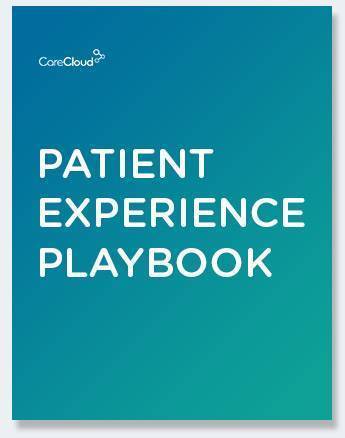It doesn’t matter which specialty you practice or where you practice. The medical groups that will thrive three years, five years, even ten years from now will be those that have done this one thing particularly well. That thing? Patient Experience Management: attracting, keeping, and expanding their patient base. Something that was once almost a given simply by practicing good medicine. Something that is a far more complicated undertaking in today’s competitive landscape and changing economic model. Practices that succeed will be those that are person-centered in every aspect of their operations — in front of the glass, behind the glass, and through the patient’s device of choice.
Continuum has teamed up with PatientPop, the leader in practice growth technology, to explore the new paradigm of the empowered patient and arm our readers with insights and best practices proven to drive growth.
Part one will start at the beginning: Where do new patients come from and just how are they going about finding and choosing providers? In part two, we’ll double-click on the role of online reviews and how practices are managing their reputations online. In part three, we’ll review how practices can optimize every touchpoint across the patient journey to develop and strengthen their brand while nurturing healthy decision-making from their empowered patients.
Part One: What are patients looking for in a provider, and where are they looking?
In this first of our three-part series, we’ll look at the changing competitive landscape for physician practices and how consumers are evaluating their options to select providers.
In an upcoming study conducted by PatientPop, 89% of providers said their practice was in a competitive market. Health systems and private equity have been fueling mergers and acquisitions of medical groups by specialty and geography to create super groups with more resources, services and marketing dollars to attract patients’ attention and to incentivize them to seek other care needs within their group. And with online access, it’s faster than ever for a patient to find other potential practices in the area and make a change if they’re not satisfied.
Alongside traditional primary care and specialty medical practices, urgent care clinics and retail-based health centers continue to spring up across the country, offering a variety of services on-demand. According to Accenture, retail clinic use increased by 445% from 2006-2014 in the last dozen years. And telehealth use is up nearly 1400% over the last five years, according to an analysis by FAIRHealth. These trends have encouraged private practice owners to change their game, whether it’s extending hours, offering walk-in time, or trying out secondary revenue opportunities like family doctors selling supplements or a podiatrist adding med spa services.
So, how do independent groups compete for attention in this new consumer-centric environment?
Norm Schrager, Senior Content Strategist, PatientPop, has led research looking at patient attitudes and behaviors when it comes to finding and selecting a new provider. He shared his insights with Continuum.
Continuum: What’s changed in how people are finding new practices?
NS: Patients today have more options, more access, and the power to go online to take charge of their own healthcare. This is a pendulum swing from the days in which patients usually followed through on whatever referral their doctor made. Or they only had access to advise from friends or family members. That still exists, of course. And we know that there are many practices that still do a lot of referral business as a primary source of new patient acquisition. But the immediate availability of online information has given more control to patients and is where the greatest opportunities exist for doctors today. And most patients, in fact, are acting as organized educated shoppers. They’re searching for doctors online instead of relying solely on referrals.
Continuum: So, what is it about a particular practice that puts it on a patient’s shortlist?
NS: Patients are putting a very high priority on convenience — something we’re seeing consistently in research. For example, there was a 2019 report from NRC Health where patients listed convenience and access to care as the most important factor in their decision-making. It was named by more patients than anything else on the list.
Curious enough, quality of care was listed fifth on the list. Why is that? Quality has become a set expectation in visiting any doctor’s office, so patients are looking for differentiators. In that same report, 80% of patients said they would switch providers for convenience factors alone. They’re assessing doctors before making appointments and putting a huge reliance on patient reviews. In a PatientPop survey, we conducted this year, 70% of patients said they found a positive reputation to be very or extremely important when they’re in the process of deciding on a doctor. So they’re going to look at those reviews, they’re going to want to know a lot about your practice and they have high expectations about what customer service means now in healthcare.
Continuum: What is the “secret sauce” for getting a consumer’s attention when they’re online looking for a provider?
NS: First, it’s important to know that our research shows that three of four patients have already gone online to conduct research about care to either find a doctor or to seek information about something care-specific — and 57% are doing this either sometimes or often. This really represents a fairly steady flow of engaged prospective patients that could be finding you, choosing you for care, and then heading on over to your office.
When a prospective patient conducts a search online, you want to engage them, hopefully before another practice does. And you want to give them the information they’re looking for. To be found, you need to rank highly and show off your expertise in search results.
It’s also important that you provide relevant contact information online. At a minimum, you want your practice name, address, and phone number (known as NAP) to be accurate and consistent everywhere, across every site and in every listing directory where you appear. Having this consistent accuracy optimizes your overall web presence, of course, but it can also improve your search ranking.
Another important opportunity is to provide answers to patients’ questions. Think of those questions you get most often in person or on the phone. And then just ask and answer them where you can online: your website or within the questions function of the Google business profile. Give patients an opportunity to see you as an expert and to know who you are while they’re out there looking.
Continuum: What can a practice do to be among the first a consumer sees when starting their online search?
NS: Search engine optimization (SEO) and website optimization are two essentials for making it easier for prospective patients to find your practice. Both require some know-how in what content to put on your website, how to code your site and the best ways to produce it. The choices you make about content on your site will directly impact how search engines find you and how highly they rank you. It’s worth the investment to work with people who know how to bring your key information to the forefront so that you become that leading voice for your specialty in your market.
There are strategies you can employ to boost the visibility of your website even further, such as producing a blog. Some people don’t realize that when you do produce a blog, it’s a fresh page every time you publish a blog post. That tells Google and other search engines you have this ongoing output of new website pages. They need to come see it, and they need to index it. And now you’ve suddenly got more pages ready to be found by searchers.
The benefits of implementing a sound content and website strategy are many. Prospective patients, and more importantly, the right prospective patients for your practice, will find you more often based on what you’re sharing and the services you are talking about. And, you’ll promote your practice and your services more consistently.
Continuum: There’s so much a practice team could talk about on a website. On what should they focus first?
NS: The patient should be able to understand who you are, what your services are, and that you’re an expert at your specialty or in your field. It’s also really important that they clearly understand that you are nearby in their area. Help them envision what it would feel like to visit your practice by sharing photos and videos. And, most importantly, don’t forget the most influential online element: patient testimonials. Patients want to see that others have positive things to say about you and your practice. If this isn’t easy to find on your site or the variety of listings websites, it is very easy for them to keep looking until they find a practice that has posted raving patient reviews. In a 2019 PatientPop survey, people listed patient reviews as the most influential online resource when selecting a healthcare provider, with 59% of respondents including it on their list. By providing all of this information, you’re actually building trust immediately before they’ve even met you.
So, just how do you generate positive patient reviews and manage your online reputation outside of what you publish on your website? We’ll tackle this topic in the second in this three-part series.

Download the Patient Experience Playbook



